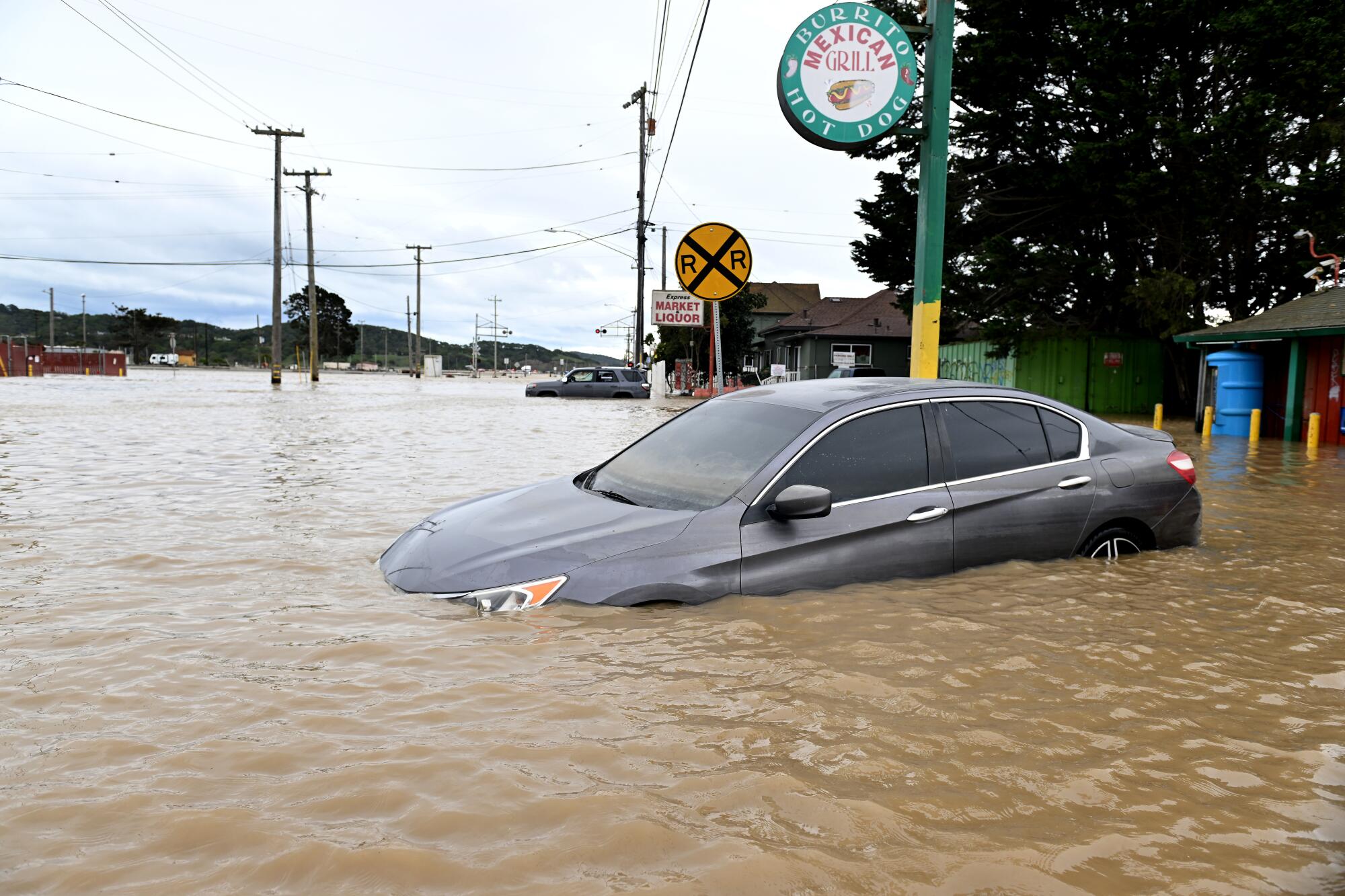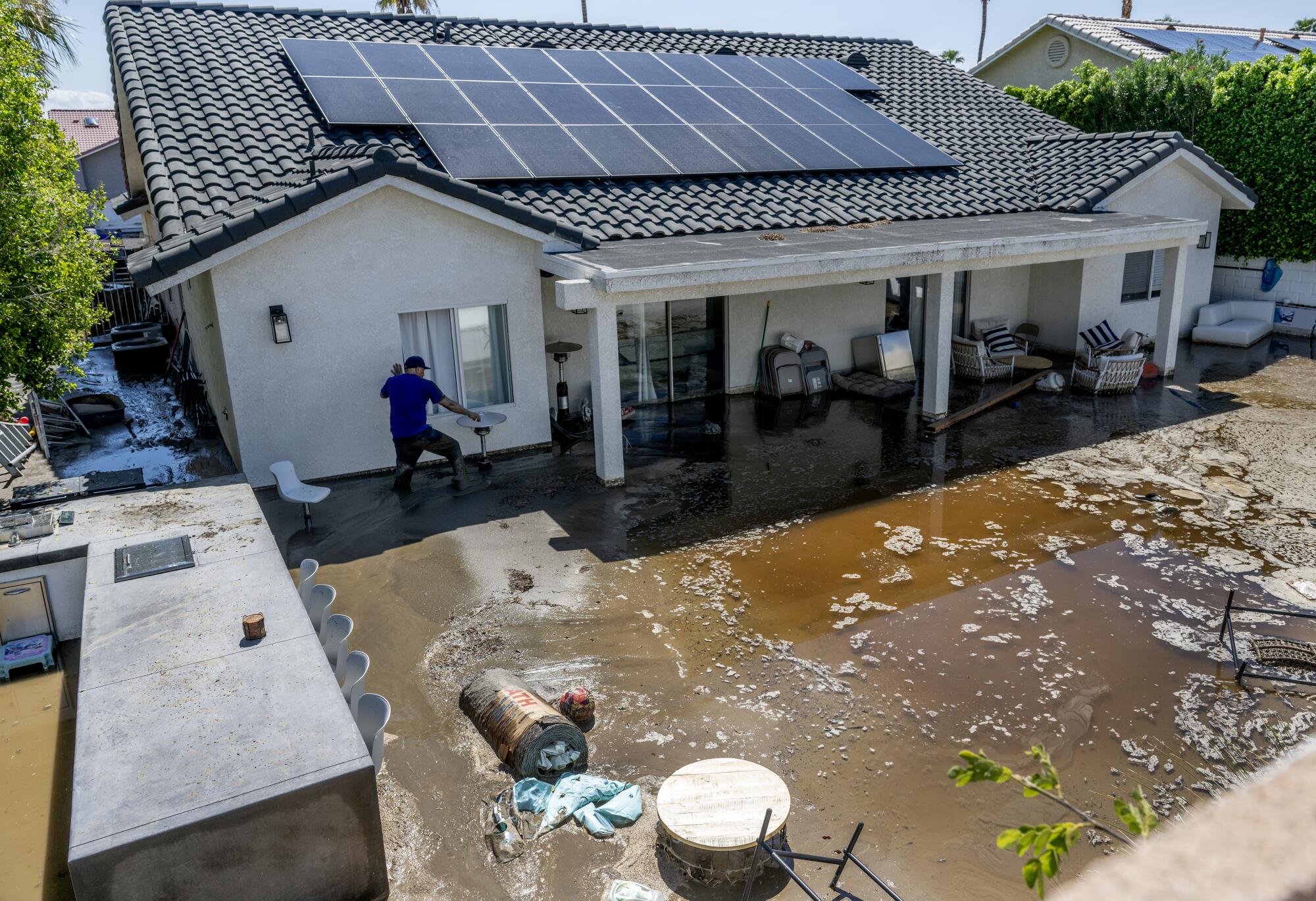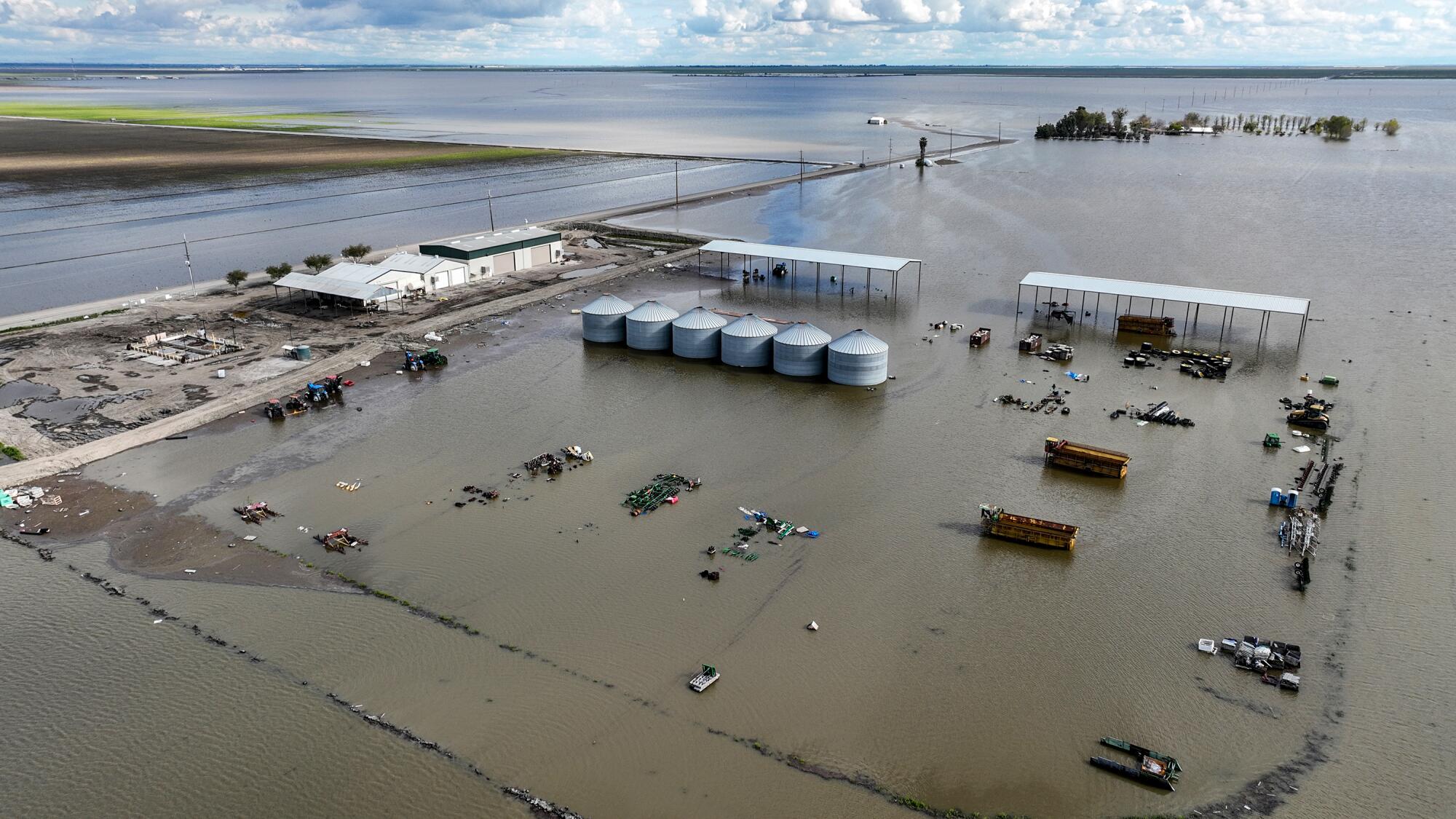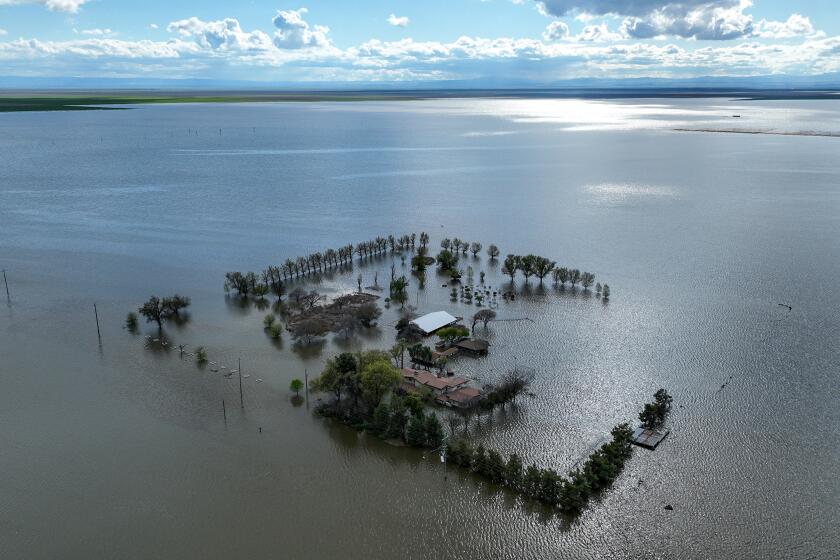
- Share via
WEST SACRAMENTO, Calif. — With California facing the prospect of a second consecutive winter of heavy precipitation, state officials are urging residents to prepare for possible widespread flooding and evacuations in the coming months.
Barely a year after dozens of powerful atmospheric rivers pounded the state and triggered historic flooding, state officials gathered at a muddy berm and pumping station near the Sacramento River this week to highlight the threat of flooding in a warming climate.
“These flood risks are getting more intense and we’re doing more than ever to protect California from these risks,” said Wade Crowfoot, California’s natural resources secretary.
Land barons seized control of the Tulare Lake Basin generations ago. This year’s destructive flooding left troubling questions about the power they wield.
More than 7 million of the state’s residents live in an area where they are at risk of flooding, officials said — and many don’t even know it. Every one of California’s 58 counties has had a flooding emergency in the last two decades.
Last year was particularly fierce as storms swelled rivers and reservoirs and inundated such communities as Planada, in the Central Valley, and Pajaro, in Monterey County.
This year, as an El Niño climate pattern strengthens, forecasts favor wetter-than-average conditions in many regions of the country — including nearly all of California, the southern Plains, Texas and the Southeast.

If those forecasts prove accurate, officials said, residents will need to be prepared for power outages and to evacuate if necessary.
Department of Water Resources officials said they are already working with tribal, federal, state and local partners to prepare for high water. The State-Federal Flood Operations Center has pre-positioned materials at locations across the state and has more supplies on hand, including 2.4 million sandbags. Officials are also working with local counterparts on emergency response.
Crowfoot also noted that California has invested $8 billion in recent years on drought and flood resilience.
The first winter outlook from the National Oceanic and Atmospheric Administration predicts that a strong El Niño will remain in place through at least the spring, bringing warm, wet conditions to California and large swaths of the U.S.
Among the efforts is the Lower Elkhorn Basin Levee Setback Project, a $280-million endeavor that, in conjunction with a weir widening project from the Army Corps of Engineers, will send high water flows from the Sacramento River into the so-called Yolo Bypass, reducing flood risk for more than 750,000 people in the Sacramento area.
As construction trucks and bulldozers rumbled nearby, members of the media picked their way carefully around puddles that had sprung up from rain the night before to gaze at the new earthworks. Officials highlighted how the project — which consisted of a new pump station along with miles of newly constructed levees — will make more space for high water flows from the mighty Sacramento River while also improving habitat for salmon as well as ducks and migratory birds.

Officials also touted the benefits of a regional approach to flood planning, particularly in the Central Valley, and the importance of such partnerships between county, state, federal and tribal officials that led to endeavors such as the levee setback project.
A stark exception to that regional approach is the southern San Joaquin Valley, where Tulare Lake was reborn this winter and grew to the size of Lake Tahoe, swallowing acres of farmland. Officials there exempted themselves from the Central Valley flood project years ago, cutting themselves out of much of the regional approach. That complicated efforts, officials said, to respond to flood risks in the area.
“Climate extremes are creating more challenges for California, including increasing flood risk across the state,” said Karla Nemeth, the director of the Department of Water Resources. “Extreme drought and extreme flooding are both expected in the future, and California is responding with historic investments.”
Toward a more sustainable California
Get Boiling Point, our newsletter exploring climate change, energy and the environment, and become part of the conversation — and the solution.
You may occasionally receive promotional content from the Los Angeles Times.






